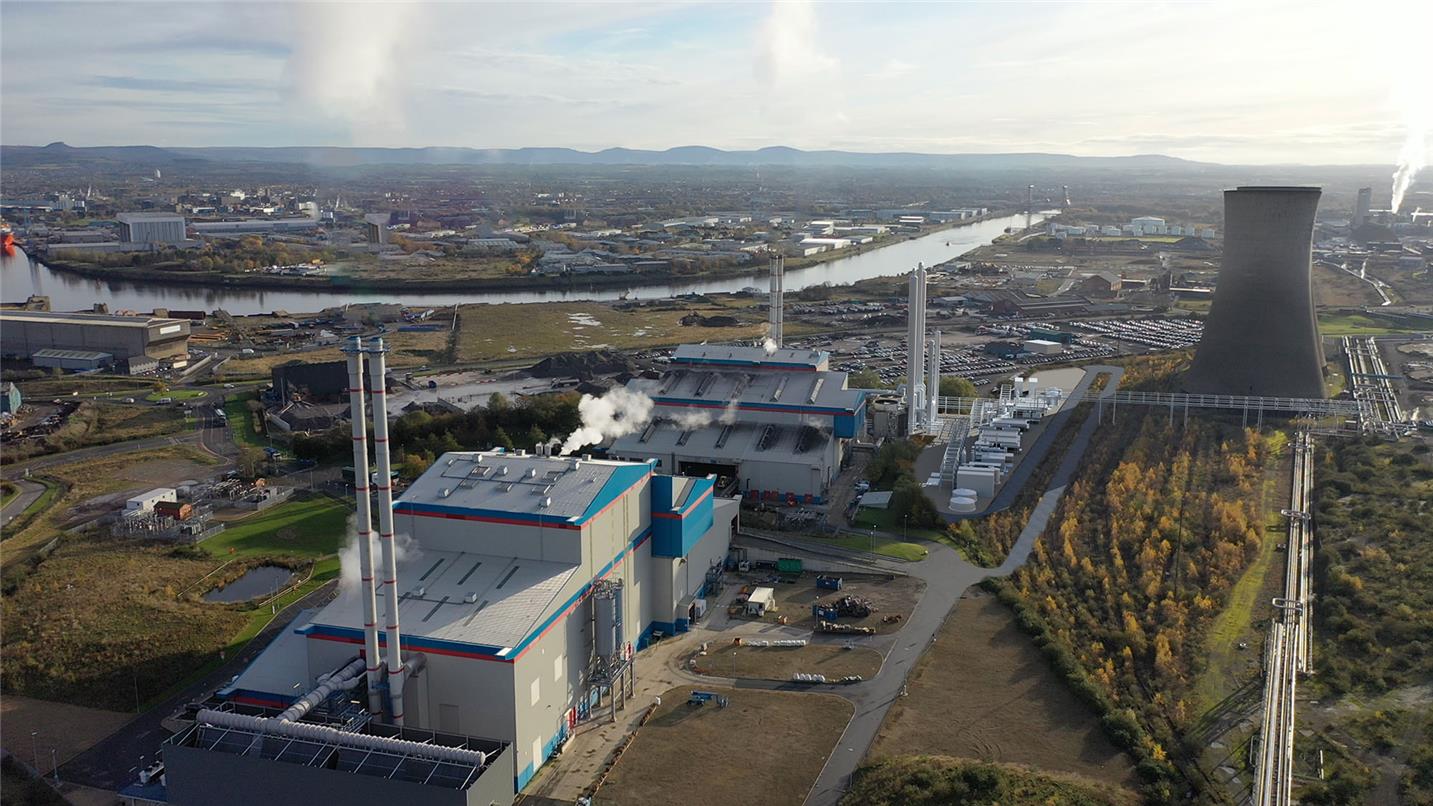The proposal
Complementing existing facilities
We already operate two energy-from-waste facilities and a household waste recycling centre at the Haverton Hill Industrial Estate in Billingham.
The columns on the plant will be no taller than the 70metre high stacks on our neighbouring energy-from-waste plants and significantly smaller than the cooling towers next door. Compared to the facilities around it, the rest of the new plant would be relatively small, at a low height of around 10m.
Delivering new jobs and reducing carbon emissions
If approved, construction of our proposed carbon capture plant would begin in 2025, creating around 50 temporary jobs, and the plant would become operational in 2027, creating around 15 permanent jobs.
It would remove more than 90% of fossil and biogenic CO₂ emissions from the existing energy-from-waste facility it connects to and would capture 240,000 tonnes of carbon every year.
Connecting to the East Coast Cluster
The captured carbon would be transported by a short connecting pipeline to the main ‘East Coast Cluster’ Carbon Capture and Storage pipeline – which would run through our site.
This main pipeline is expected to be operational by 2027 and will transport carbon captured from a range of projects across Teesside 145km to an aquifer beneath the North Sea where it will be stored safely.
SUEZ Tees Valley is one of more than 17 projects that make up the East Coast Cluster, which includes projects across Teesside and Humberside. Collectively the cluster is aiming to capture and store up to 27 million tonnes of CO2 emissions each year, making it a key part of the UK’s Net Zero Strategy.
Delivering Net Zero for SUEZ, Teesside and the UK
The UK Government’s Climate Change Committee has described Carbon Capture as “a necessity rather than an option to achieve Net Zero by 2050 ”.
In order to reach Net Zero one of the challenges the UK faces is the decarbonisation of residual waste that isn’t currently being prevented, reused, or recycled. Our goal is to help households, councils and businesses decarbonise that waste through projects like this.
Our proposed Carbon Capture plant would decarbonise the process of creating energy from the non-recyclable household waste collected from across North East England that is processed at lines 1-3 of SUEZ’s energy-from-waste facilities in Billingham.
Anticipated project timeline
Once our pre-application consultation has ended, we will be submitting our planning application to Stockton Borough Council, which we expect will happen in late 2022.
After we submit our planning application, you will also be able to submit your views directly to the council.
If approved, construction is expected to begin in 2025 with the carbon capture plant fully operational in 2027.
What the proposals mean for you and your community
We don’t expect the proposed development to have any significant impacts in terms of visual impact, traffic, emissions, noise, odour, or biodiversity.
We have undertaken a detailed Environmental Impact Assessment as part of the planning application, and this has now been submitted to Stockton Borough Council for consideration.
A summary of key elements of this is provided below.
Visual impact
Traffic
Construction traffic would be subject to a Traffic Management Plan, which would be agreed with the local authority and would ensure traffic avoided residential areas, particularly the Clarences.
During operation, we anticipate there will be around five additional vehicle movements in and out of the site each day, and these will only take place between 08.00 and 17.00.
